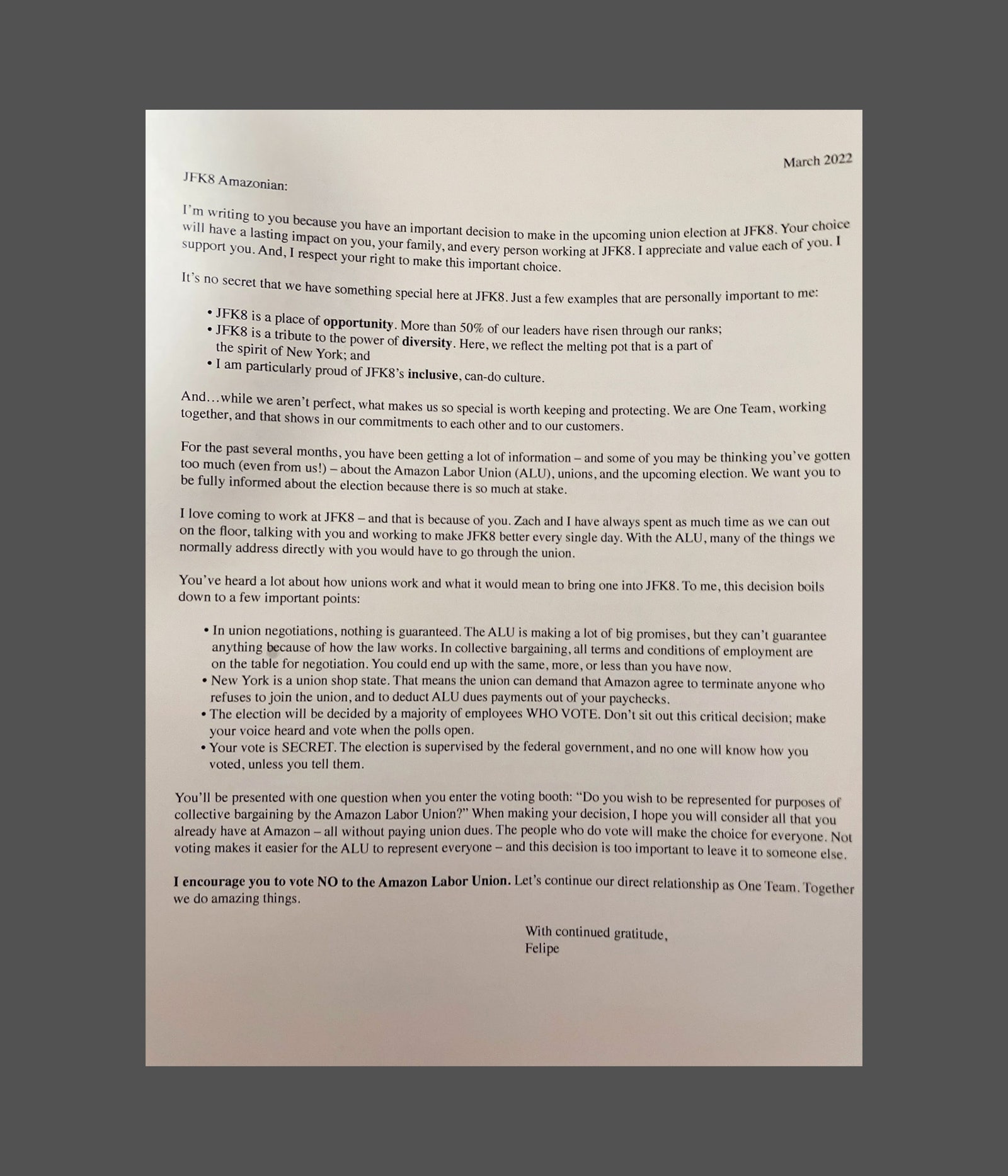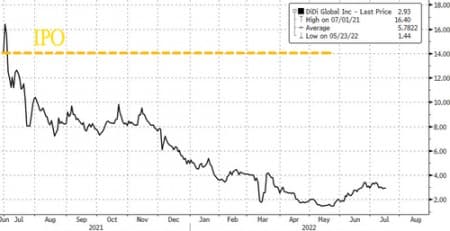[ad_1]
Bradley Moss is having a busy year. A consultant with union-avoidance firm The Burke Group, Moss has been paid by Amazon to traverse the US from Bessemer, Alabama, to Staten Island, New York, holding meetings and canvassing the warehouse floors to try to convince 12,000 workers at two warehouses to vote against unionizing.
Friday marks the end of voting at the election at BHM1, the Bessemer warehouse where the Retail, Wholesale and Department Store Union (RWDSU) is getting a do-over after Amazon was found to have violated labor law during last year’s election. In the first vote last March, the union lost by a more than two-to-one margin. Meanwhile, another election starting Friday runs through March 30 at the JFK8 facility in Staten Island, where the independent Amazon Labor Union (ALU), composed of current and former employees, is facing its first challenge to represent Amazon warehouse workers.
Both face tough odds, in part due to weak labor law in the US that favors employers. Amazon has poured millions of dollars into an anti-union campaign, flying in anti-union consultants like Moss, who was paid $ 375 an hour, according to his National Labor Relations Board (NLRB) testimony last year. Union organizers say the company has been holding round-the-clock mandatory anti-union meetings, dispatching consultants to talk to workers one-on-one, papering the warehouse with anti-union fliers, and buying up anti-union Facebook ads. The unions have filed dozens of unfair labor practice charges during their campaigns, accusing the company of activities ranging from illegally removing pro-union fliers to retaliating against pro-union workers.
“Our employees have the choice of whether or not to join a union,” Amazon spokesperson Kelly Nantel wrote in a statement. “They always have. As a company, we don’t think unions are the best answer for our employees. Our focus remains on working directly with our team to continue making Amazon a great place to work. ”
Workers at both warehouses complain about low pay, job insecurity, a high churn rate, and insufficient breaks during physically taxing 10-hour-plus shifts. The minimum hourly pay at JFK8 is about $ 18, which some employees say is a pittance given the cost of living in New York. ALU organizers say some workers sleep in their cars in the parking garage, while others work multiple jobs to make ends meet. “The first thing I’d like to see change is the basic recognition of us being human, and not just a means to make them more money and get as many packages out the door as possible,” says Isaiah Thomas, one of the workers at BHM1. “Because it comes at the expense of people. People have died there. ” In May, a worker died after reportedly collapsing at the facility.
ALU organizers in Staten Island, which went public with their union last April, say they saw what went on in Bessemer and learned from it, building a union that Amazon would struggle to fight. They noticed that one of the company’s strategies during the BHM1 election, common in anti-union campaigns, was to characterize the union as outside interlopers rather than a worker-driven group. “That’s the reason we chose to organize independently,” says Connor Spence, an ALU worker-organizer. “Because when you bring in an established union, Amazon just paints them as like a greedy third party that’s preying on the Amazon employees. But when the union is Amazon employees, just grassroots organizing within the warehouse, it’s harder for them to attack us. They still try. But they kind of lose credibility when people find out that we’re just workers. ”
Although both unions are taking on the same mammoth company in back-to-back elections, they are not equivalent. Some in the labor movement wrote the ALU off when it first started, notes San Francisco State University labor studies professor John Logan. As a new union with an all-volunteer staff and no income from dues-paying members, they had fewer resources than an established union, limiting their ability to do labor-intensive work like door knocking. Their main funding source was a GoFundMe page. Organizers had to retract their original election petition in November when it fell short of the 30 percent signature threshold because so many signatories had left the company. (Amazon’s companywide annual turnover rate is reportedly 150 percent, a major challenge for organizers. Nantel, the Amazon spokesperson, attributes some of this to short-term hires who signed on for extra income.) They had yet to organize a single workplace, let alone “the wealthiest and most sophisticated anti-union company on the planet,” says Logan.
While Logan thinks victory is a long shot, “anyone who thinks that they don’t know what they’re doing, I think that’s just dead wrong,” he says. “I think there is a strategy there, which involves quite sophisticated use of media and social media to generate an atmosphere of excitement and energy around the campaign.”
Over the past several months, organizers have blanketed Twitter, Instagram, Facebook, and TikTok with images of swagger, combativeness, and camaraderie. They call out union busters by name. They post videos from inside the warehouse of alleged labor law violations. The crow about shutting down anti-union meetings. They advertise their celebrity support. “If they say something that’s optically super heinous, we’ll leak it online,” says Spence.
[ad_2]
Source link



